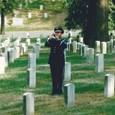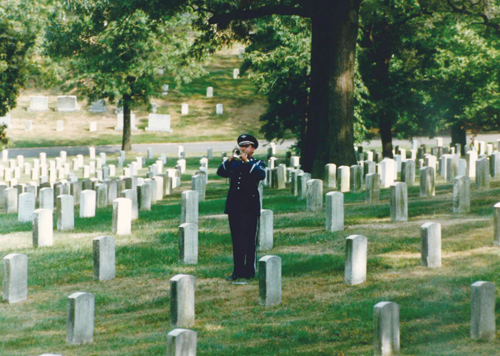
There is perhaps no other melody that stands as an expression of mourning to Americans more than the 24 notes of Taps. Often heard at military funerals, this haunting melody is an outward expression of a family’s grief, as well as that of a grateful nation, at the loss of loved ones who served in the U.S. Armed Forces. The composition of the call is attributed to American Civil War Union General Daniel Butterfield, and was originally used to signal “lights out” at the end of the day. Although it is now more associated with funerals, it is still used by the military and groups such as the Boy Scouts of America to signal the end of the work day. It has even been given lyrics that seem appropriate for both funerals and nocturnal signaling. The best known words, from an unknown writer, are:
Day is done, Gone the sun,
From the lake, From the hill,
From the sky.
All is well, Safely rest,
God is nigh.
Whatever the setting, the bugle call should be performed with reverence and solemnity. Here are a few ideas on how to perform Taps.
Taps can be played equally well on trumpet, cornet, or bugle. I prefer the Bb cornet, but players should choose the instrument to which they feel best suited. There are two fairly standard versions of the melody. The first is perhaps the most common setting and is used by the U.S. Army and Air Force.
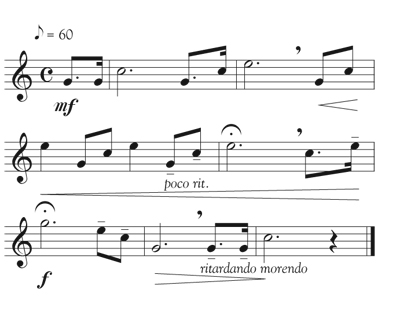
The second, which contains the dotted rhythms, is sometimes associated with the United States Marine Corps and Navy.
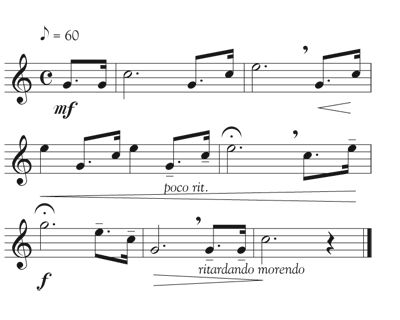
An effective way to prepare to perform Taps is through tonguing lip flexibility exercises.
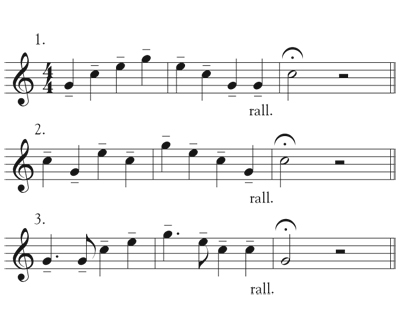
These contain the same partials from the harmonic series that are found in the bugle call. I have found this partial work to be crucial. It helps ensure response and solid attacks on those pitches. Response and attack can be two of a trumpet player’s biggest challenges in a solo like this.
The expression marks included here are mine. I find that stretching the notes and taking just a few breaths produces a satisfying rendition with plenty of connection and flow. Note that the first breath mark is not until after the dotted half note in the second full measure, and that the next breath comes at the E with a fermata in measure four.
Students should experiment with the time and record their ideas to see what sounds good. I tend to keep the eighth note constant throughout at the marked tempo of quarter note = 60, and stretch the held G in measure five, as well as the two eighth-notes that follow. I also prefer to slow down the pulse for the final three notes and let the sound die away on the end.
Because Taps is usually performed outdoors, creative preparation will be beneficial. I was once selected to perform Taps in extreme heat on national television. I prepared by warming up on the instrument, then going into my garage on a hot July afternoon, and waiting a few minutes for my lips get relatively cold, I played the solo. I did this sequence until I could play the piece at least five times without missing or chipping a note.
For extreme cold weather performances, avoid moving valves up and down before playing. If the temperature is below freezing, the valves can stick, which makes it impossible to play.
Above all, the player should remember the function of the call is expression, and in the case of a military funeral it is the expression of mourning and grief. A smooth, expressive rendition of Taps will lend dignity to this solemn ceremony.
